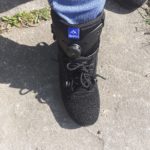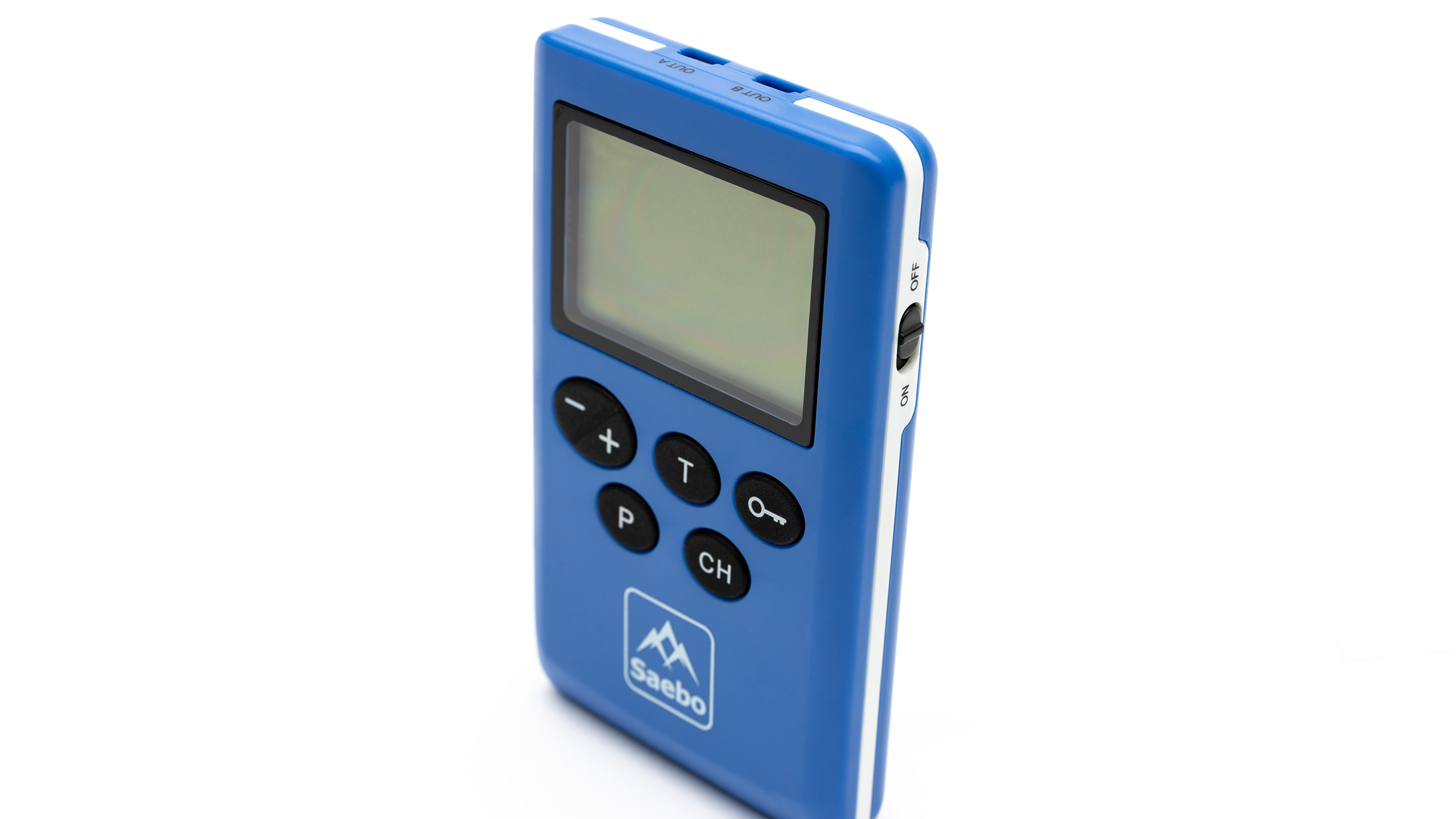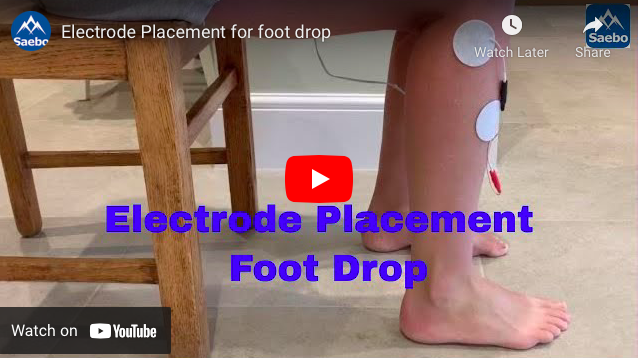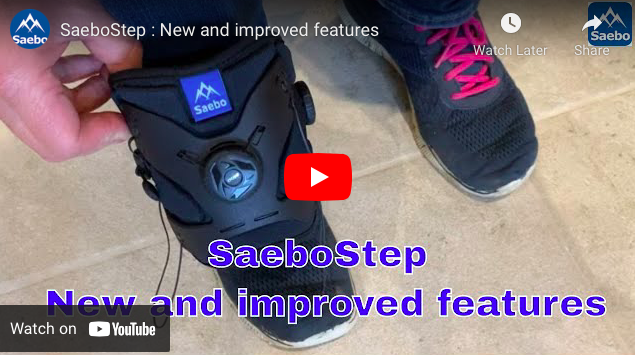Foot Drop : Charlotte’s Journey
Amy Bean
Tuesday, March 29th, 2022

In June 2021, I suffered an L5/S1 disc herniation during a warm up at my dance fitness class. The disc compression resulted in right sided foot drop. Having always been a fairly active person and on the go mum of 2 this came as a bit of a shock. Not only was I dealing with the most severe pain I’d ever experienced, I now had something called foot drop which I knew nothing about. On discharge from hospital where I was first taken by ambulance, I remember being unable to put my shoe on and asking for assistance. My foot felt like it was being put in a shoe 2 sizes too small and felt very unpleasant. I also noticed that I couldn’t move my toes up and down. The first few days and weeks were awful as I couldn’t walk without my husband’s support. On the day I first saw my consultant, I had to walk in without my husband. I was so embarrassed as I struggled to walk across the reception. My consultant referred me for an MRI, which I had the following day, and arranged for me to see a Physio.
The Physio gave me a pair of crutches and a velcro based drawstring orthotic which helped improve my walking but it was a struggle to get my foot in the shoe and very uncomfortable. I then began physio and hydrotherapy with focus on trying to help the back but also work the foot. I had so much tightness down my right side and leg which meant getting up in the morning would get unpleasant. I wore a night splint to try and stretch the muscles but this caused a lot of discomfort in my foot and impacted my sleep. After trying hard at physio and hydrotherapy, and seeing no major change to the weakness in my foot, it was decided that surgery (Microdiscetomy) would be the next best action which I had in August 2021. It was made clear that there was no guarantee but there was a potential for a more favourable outcome for the footdrop with surgery.
I began exercises 5 days after surgery for my back and I started to move my foot as much as I could. It took some time after surgery to recover, I was not able to walk very far so it was hard to see how the foot was recovering. I initially used crutches as I didn’t feel stable and was very much walking with my knee high. I felt like a soldier marching which did not help my back as I was recovering.
As I began to walk further and took away the crutches I noticed that I would go wobbly randomly and gravitate one way. I described it like I’d had a few drinks. This become more obvious as I increased my distance and I simply felt I could not balance fully. This I learnt was from the foot drop and not feeling through the foot. I felt embarrassed and felt like lots of people were staring.
As I got better, my exercises increased and more foot exercises were built in using resistance bands. From the injury I had tightness down the right leg so I could not kneel, let alone sit on the floor and so I began having an hour remedial massage for the first month and now have one fortnightly. On the 2nd massage I walked home and it was only as I got to the front door I realised I had not lifted my leg as high and walked the smoothest if had since injury. This helped to relax the muscles which then slowly repaired my confidence walking as I felt more stable.
The footdrop has been a huge impact on daily life physically and mentally. For my husband and children this has meant mummy not running round the same, asking for help more, and losing my independence as it has prevented me from driving as my foot simply won’t lift enough. I have frequent emotional meltdowns over shoes as I simply cannot wear what I want, and I have a safety pin holding the orthotic I currently have in place as it likes to slip out under the laces, tripping over my foot regularly with a complete fall just weeks ago; not to mention the intense sensations as the nerve potentially regenerates.
Everyday I do various foot exercises which involves inversion, eversion, lift up and down, and rotating. I do these using various ways to assist including resistance bands, yoga straps, and my boys and husband moving them. I have made it into a little routine with music to make myself feel better. I also walk as much as I can but my leg and foot fatigues quicker and I notice the faster I try to walk the harder it becomes. I also love sewing so have even used my sewing machine as both a mental and physical benefit. I find the control I need to utilise the machine foot helps me work my foot even though its not quite as it should be.
I saw my consultant in February and there had not been much improvement. The summary was that a full recovery was not looking too promising and the next option would be a referral to see if ankle fusion or tendon transfer would be a option in 6 months if I wanted it, but nothing more than that could be offered other than continuation of my physio exercises. This was quite hard to accept but being determined I thought I’ll carry on and increased the foot exercise repetitions each day. A neighbour lent me his circulation plate and weirdly the following day I was ecstatic to get some new movement which caught me by suprise. The toes lifted up and I can now slightly raise these on my own. This is when I started to think about electrical stimulation and found my way to Saebo.
It had been suggested I could look into FES (Functional Electrical Stimulation) by my physio, but after enquiring with the GP I discovered this wasn’t something on offer for me. Researching online I could see lots of videos of people with foot drop talking about electrical stimulation but this seemed impossible to access or no one knew about it. I clocked the SaeboStim Pro and enquired with Saebo. The staff member was brilliant and discussed the potential of the device but did not at any point push products on me or guarantee anything. I later purchased this. On receipt, I decided to do my left leg first and following the electrode placement shared by Saebo…brilliant!
Now to try the bad leg – the leg was pulling down not up and I couldn’t understand why. My husband and I played around with the electrodes for an hour and gave up. Saebo asked me to send a video and was happy to suggest other ways to try. In the end a video call was arranged and I was so impressed. I was offered a contact for a neuro physio and the next day I had a home visit from 2 neuro Physios who were able to assist me using my SaeboStim Pro. It was fantastic. They explained the nerve connection is there but very weak so they set up a customised program to use daily for 10 minutes which I can do a few times a day. I am doing this religiously and at the moment I have to work with the device, and if I get some foot lift I can feel the tendon contract; afterwards my leg and foot feels fatigued so I feel reassured some is happening. Whilst I know I won’t see any drastic changes just yet I’m feeling positive and so grateful to Saebo for their support as there just feels a huge gap out there for people like me.

We are now in March and the nice weather has struck and a number of wedding invites has triggered a further upset simply because I can’t wear pretty shoes and feel frumpy in trainers. I see others starting to wear their pretty sandals…not me. I ordered a shoeless attachment to try with my current brace and it was a disaster. I felt more safe without it. I then remembered the SaeboStep which was discussed at my initial chat and what can I say, it arrived today and I’m so excited! It feels great and today I walked the most normal I’ve ever done whilst wearing it. I’m now going to look to buy some wide strap sandals and extra attachments so I can finally get out of the hot walking boots I’ve been resigned to!
If you would like to learn more about the features of our SaeboStep and whether it would be beneficial for you, our Clinical Team are on hand for advice. You can also take a look at our Clinical Specialist in the video below highlighting its unique features.


